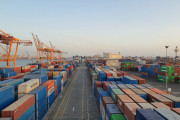In today's interconnected world, the concept of Global trade network connectivity plays a crucial role in shaping international commerce and economic relationships. It refers to the intricate web of trade routes, transportation networks, digital platforms, and logistical infrastructure that facilitate the exchange of goods and services across borders.
The significance of Global trade network connectivity lies in its ability to reduce barriers to trade, enhance market access, and promote economic growth on a global scale. By fostering efficient supply chains and enabling smoother transactions, it opens up new opportunities for businesses and economies alike.

One of the key elements of Global trade network connectivity is the physical infrastructure that supports trade activities. This includes ports, railways, highways, and airports that serve as critical nodes in the transportation of goods between countries. Efficient infrastructure reduces transit times and costs, making trade more competitive and accessible.
Moreover, the digital revolution has significantly transformed Global trade network connectivity. E-commerce platforms, online marketplaces, and digital payment systems have streamlined international transactions, allowing businesses of all sizes to participate in global trade seamlessly.

The geopolitical landscape also influences Global trade network connectivity. Trade agreements, tariff policies, and geopolitical stability or tensions can either facilitate or hinder the smooth flow of goods and services across borders. Stable diplomatic relations and clear regulatory frameworks are essential for fostering a conducive environment for global trade.
Furthermore, the resilience of Global trade network connectivity was tested during the COVID-19 pandemic. Disruptions in supply chains highlighted vulnerabilities but also underscored the importance of diversification and digitalization in ensuring continuity in trade flows.
Looking ahead, the evolution of Global trade network connectivity will continue to be shaped by technological advancements and shifts in global economic dynamics. Innovations such as blockchain technology for supply chain management and sustainable transportation solutions are poised to redefine how goods are traded across the globe.
In conclusion, Global trade network connectivity is not merely a concept but a critical enabler of economic prosperity and international cooperation. By fostering interconnectedness and efficiency in trade, it paves the way for a more inclusive and resilient global economy.